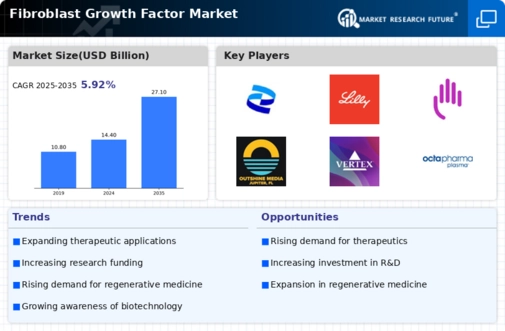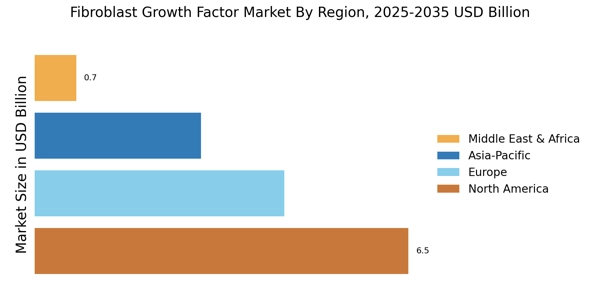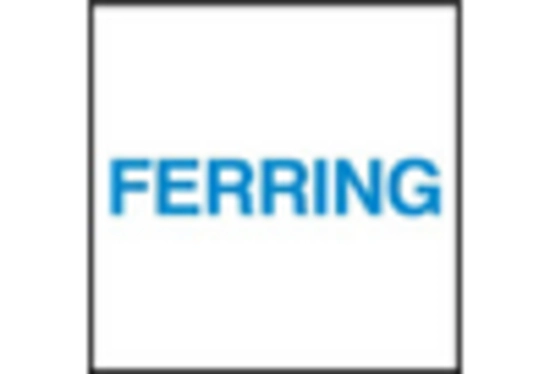Advancements in Biotechnology
Technological advancements in biotechnology are propelling the Fibroblast Growth Factor Market forward. Innovations in genetic engineering, cell culture techniques, and drug delivery systems are enhancing the efficacy and safety of fibroblast growth factor therapies. For instance, the development of recombinant fibroblast growth factors has improved their availability and application in clinical settings. The market is witnessing a surge in research and development activities aimed at optimizing these growth factors for various therapeutic applications. As biotechnology continues to evolve, it is likely that new formulations and delivery methods will emerge, further expanding the market and providing healthcare professionals with more effective tools to treat patients.
Increasing Prevalence of Chronic Diseases
The Fibroblast Growth Factor Market is experiencing growth due to the rising prevalence of chronic diseases such as diabetes, cardiovascular disorders, and cancer. These conditions often lead to tissue damage and necessitate advanced therapeutic interventions. Fibroblast growth factors play a crucial role in tissue repair and regeneration, making them vital in the treatment of these diseases. According to recent estimates, the incidence of chronic diseases is projected to rise significantly, thereby increasing the demand for innovative therapies that utilize fibroblast growth factors. This trend suggests a robust market potential for companies involved in the development and commercialization of fibroblast-based treatments, as healthcare providers seek effective solutions to manage these complex health issues.
Rising Awareness of Personalized Medicine
The Fibroblast Growth Factor Market is benefiting from the increasing awareness and adoption of personalized medicine. As healthcare shifts towards tailored therapies that consider individual patient characteristics, fibroblast growth factors are emerging as promising candidates for personalized treatment approaches. These growth factors can be engineered to target specific pathways involved in disease processes, enhancing therapeutic outcomes. The trend towards personalized medicine is supported by advancements in genomics and proteomics, which enable more precise targeting of therapies. This shift is likely to drive demand for fibroblast growth factor-based treatments, as healthcare providers seek to optimize patient care and improve treatment efficacy.
Growing Investment in Regenerative Medicine
Investment in regenerative medicine is a key driver for the Fibroblast Growth Factor Market. As stakeholders recognize the potential of fibroblast growth factors in promoting healing and tissue regeneration, funding for research and development is increasing. This influx of capital is facilitating clinical trials and the commercialization of new therapies. Reports indicate that the regenerative medicine sector is expected to reach substantial market valuations in the coming years, with fibroblast growth factors being a focal point of this growth. The emphasis on developing innovative treatments that harness the body's natural healing processes is likely to sustain interest and investment in this area, thereby bolstering the fibroblast growth factor market.
Regulatory Support for Innovative Therapies
Regulatory bodies are increasingly supportive of innovative therapies, which is positively impacting the Fibroblast Growth Factor Market. Streamlined approval processes and incentives for developing novel treatments are encouraging companies to invest in fibroblast growth factor research. Regulatory agencies are recognizing the potential of these growth factors in addressing unmet medical needs, particularly in regenerative medicine and oncology. This supportive environment is likely to accelerate the introduction of new fibroblast-based therapies into the market, providing patients with access to cutting-edge treatments. As regulations evolve to accommodate advancements in science, the fibroblast growth factor market is expected to expand, driven by a favorable regulatory landscape.


















Leave a Comment